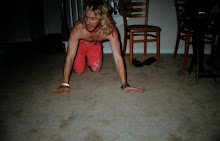



Vertigo: YO

Movie posters exist for the most part to advertise a new film to people who happen to pass by a theatre or bus stop. American graphic designer Saul Bass (1920-1996) saw the potential for the medium to be more artistic and provocative when he began making posters for films back in 1954, starting with Otto Preminger’s Carmen Jones. He continued to team up with Preminger, Alfred Hitchcock and others to design stylized posters, and even branched out into movie title sequences.
Even if you don’t know him by name, you are likely to recognize Bass’ work, or at least his influence.
In 1955, Bass re-teamed with Otto Preminger to create the poster for his controversial movie The Man With the Golden Arm in which Frank Sinatra starred as a heroin addict. Bass used the arm as a centerpiece, and established his signature style using deconstruction, bright colors and sharp angles.
Additionally, Bass designed the opening title sequence, once again highlighting the arm.
In 1958, Bass worked with Alfred Hitchcock for the first time with the release of Vertigo, the faux-supernatural mystery with a twist.
This guy is not experiencing vertigo. I probably would be if I was sitting on his edge, too.

Fritz Lang’s Metropolis
“At last we have the movie every would-be cinematic visionary has been trying to make since 1927.” - AO Scott, NYT
Fritz Lang’s film was a wonder to me the first time I saw it. The images used in the film helped me to get lost in the dynamic world Lang created. The film has many layers and it includes three different settings. The first is the Babel Tower symbolizing paradise, then the world of the machines that is inhabited by the workers and lastly the catacombs beneath the city made up of ancient ruins. This last setting is the place that the workers go to meet and hear their spiritual guide and prophet Mariam.
There is a rhythm in the motion of the factory workers on the factory floor. They move in unison and in sync with there fellow workers. Their synchronicity is symbolized in their motions, ebbing and flowing like the current of an ocean, they appear to be one body accomplishing one great task.
In the film, the hero, Joh Frederson (Freder) is the rich playboy who is the son of the master and architect of the city. The workers do all the work and people like Freder live off the spoils of their labor. The children of the factory workers accompanied by Maria come to visit Babylon to see the world of their creator. Upon seeing them, Freder empathizes with them and makes it his mission to go and visit the world of the factory workers and understand their life.
In the scene below in the underworld of the factory we see workers enveloped in clouds of smoke. Then there is an accident and an explosion. Workers are injured and then the screen changes and we get a view of the machine (labeled Moloch!) as a great pit of fire that the half naked workers are being horded into to be burnt alive as fodder for the machine. It’s a scary vision and our hero Freder looks on this vision with dismay. Then we return to reality to see workers being carried off from the accident in stretchers.
This apocalyptic vision gets Freder thinking and he later returns to the workers and disguises himself as a worker and he tries as the film goes on to become their saviour.
Fritz Lang’s cityscape scenes are amazing works of art and the imposing architecture serves the ultimate purpose of portraying a world of sinister power. I was impressed with the film and looked on at wonder at the city that Lang created.
This clip shows the children of the factory workers accompanied by Maria visiting Babylon to see the world of their creator. Freder empathizes with them and makes it his mission to go and visit the world of the factory workers and understand their life.







No comments:
Post a Comment